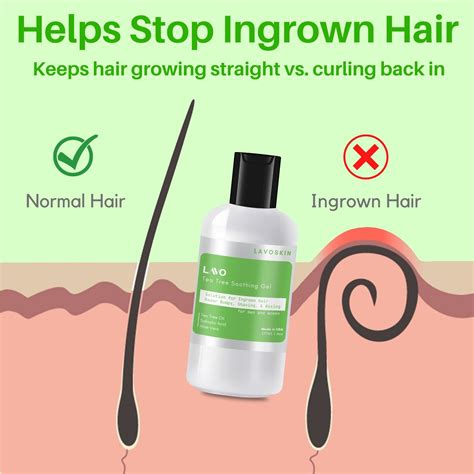Prevent razor burn & ingrown hairs for a consistently sharp, confident look?

Achieving a Flawless Shave: Banish Razor Burn and Ingrown Hairs
For many, the daily ritual of shaving can be a double-edged sword. While aiming for a clean, sharp look, the unfortunate realities of razor burn and ingrown hairs often emerge, leaving skin irritated, bumpy, and far from confident. These common adversaries don’t have to be a permanent part of your grooming routine. By understanding their causes and adopting a strategic approach, you can transform your shave into a consistently smooth and comfortable experience.

Understanding the Enemy: Razor Burn and Ingrown Hairs
Razor burn is essentially skin irritation caused by shaving. It manifests as redness, tenderness, and sometimes a stinging or burning sensation. It often results from using a dull blade, shaving against the grain, applying too much pressure, or shaving dry skin without proper lubrication.
Ingrown hairs occur when a shaved hair curls back into the skin and grows inwards, leading to red, itchy bumps, sometimes with a pus-filled head. They are more common in people with curly hair, but anyone can experience them if hair follicles become clogged or hair doesn’t grow straight out of the skin.
Pre-Shave Preparation: The Foundation of a Smooth Shave
A successful shave begins long before the blade touches your skin. Proper preparation softens the hair and primes the skin, drastically reducing irritation.
- Warm Water Wash: Shave after or during a warm shower. The warm water and steam open pores and soften hair follicles, making the hair easier to cut.
- Exfoliate Gently: 1-2 times a week, use a mild facial scrub or an exfoliating brush to remove dead skin cells. This helps to lift hairs and prevent them from getting trapped under the skin, minimizing ingrown hairs.
- Pre-Shave Oil: Apply a few drops of pre-shave oil. This creates an additional protective barrier between your skin and the razor, allowing for a smoother glide and reducing friction.
- Quality Shaving Cream/Gel: Use a rich, hydrating shaving cream or gel that creates a thick lather. Let it sit on your skin for a minute or two before shaving to further soften the hair. Avoid aerosol foams with harsh chemicals, which can dry out the skin.

Mastering Your Shaving Technique
The way you handle your razor is crucial in preventing irritation.
- Sharp Blade is Key: A dull blade tugs at hairs, leading to irritation. Change your razor blade every 5-7 shaves, or at the first sign of discomfort. Consider a multi-blade razor for efficiency, but some find a single-blade or safety razor more gentle.
- Shave With the Grain: Always shave in the direction your hair grows first. This reduces tugging and minimizes irritation. For a closer shave, you can re-lather and shave across the grain on a second pass, but avoid shaving against the grain if you’re prone to razor burn or ingrown hairs.
- Light Pressure: Let the razor do the work. Pressing too hard can cause nicks, cuts, and excessive skin irritation.
- Rinse Frequently: Rinse your razor under hot water after every few strokes to clear away hair and shaving cream, ensuring optimal performance.
- Stretch, Don’t Pull: Gently stretch your skin taut with your free hand to create a smooth surface, but avoid pulling too aggressively.

Post-Shave Care: Soothe and Protect
Your routine isn’t complete until you’ve cared for your skin after the shave.
- Rinse with Cold Water: After shaving, rinse your face with cool water to close pores and soothe the skin. Gently pat your face dry with a clean towel.
- Alcohol-Free Aftershave Balm: Apply a soothing, alcohol-free aftershave balm or lotion. Alcohol-based aftershaves can dry out and irritate freshly shaved skin. Look for ingredients like aloe vera, chamomile, and witch hazel, known for their calming properties.
- Moisturize Daily: Keep your skin hydrated. A good moisturizer helps maintain skin elasticity and reduces the likelihood of hairs curling back into the skin as they grow.
- Avoid Tight Clothing: If shaving areas other than your face, avoid tight clothing immediately after to prevent friction and allow pores to breathe.

Advanced Tips for Persistent Issues
- Consider Single-Blade Razors: For those with very sensitive skin or extremely curly hair, a safety razor or even a straight razor (if properly trained) can reduce ingrown hairs by cutting hair at a less acute angle.
- Give Your Skin a Break: If razor burn or ingrown hairs are persistent, consider allowing your hair to grow out for a few days to let the skin recover.
- Chemical Exfoliants: Products containing salicylic acid or glycolic acid can help prevent ingrown hairs by keeping pores clear and exfoliating the top layer of skin. Use these as part of your regular skincare, not immediately after shaving.

Consistency is Key for a Confident Look
Preventing razor burn and ingrown hairs isn’t about a single magic product but rather a consistent, thoughtful approach to your shaving routine. By investing in quality products, mastering your technique, and committing to proper pre and post-shave care, you’ll not only banish irritation but also reveal consistently smooth, healthy skin. Embrace these habits, and you’ll find that a sharp, confident look is always within reach.








